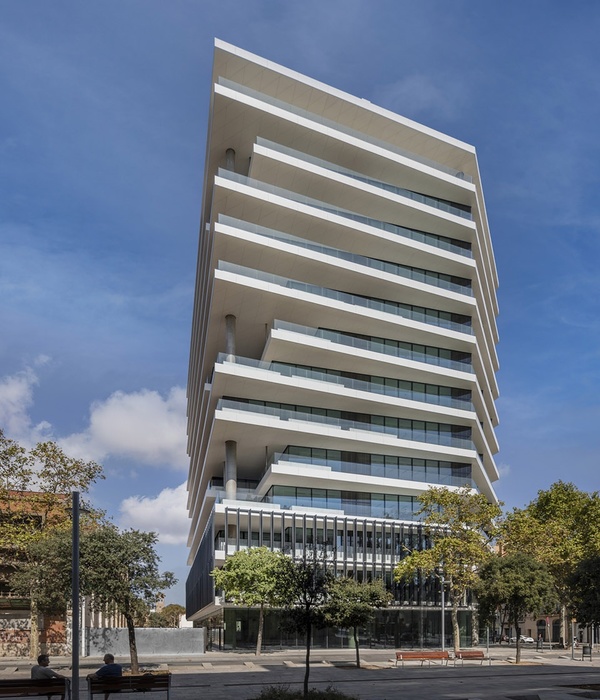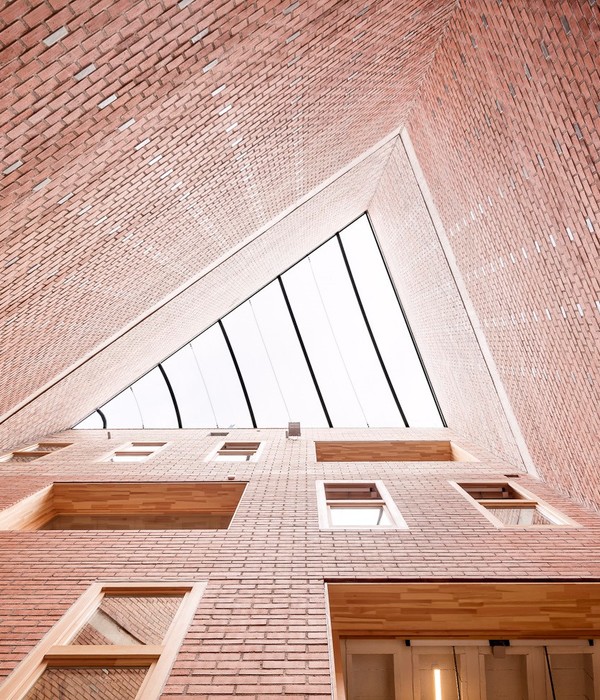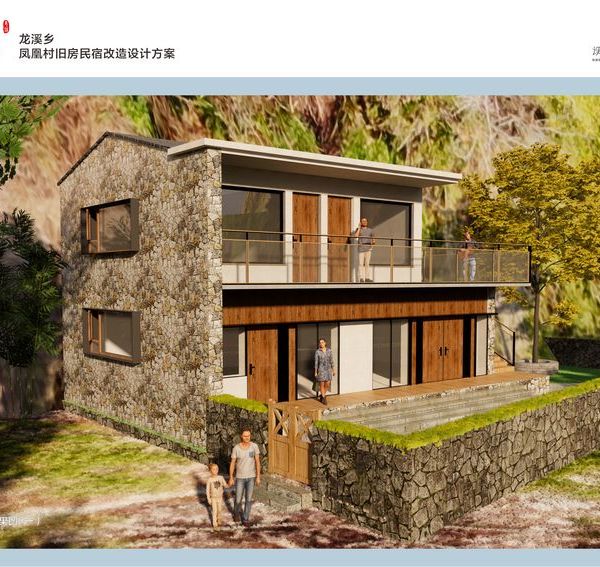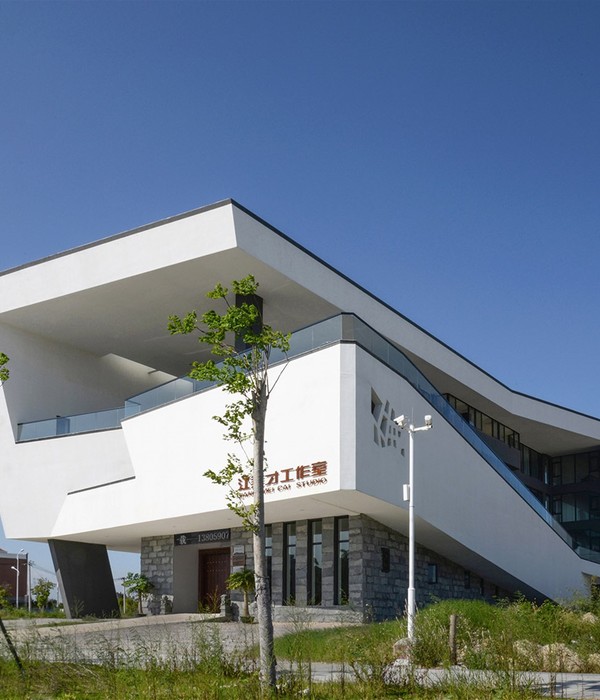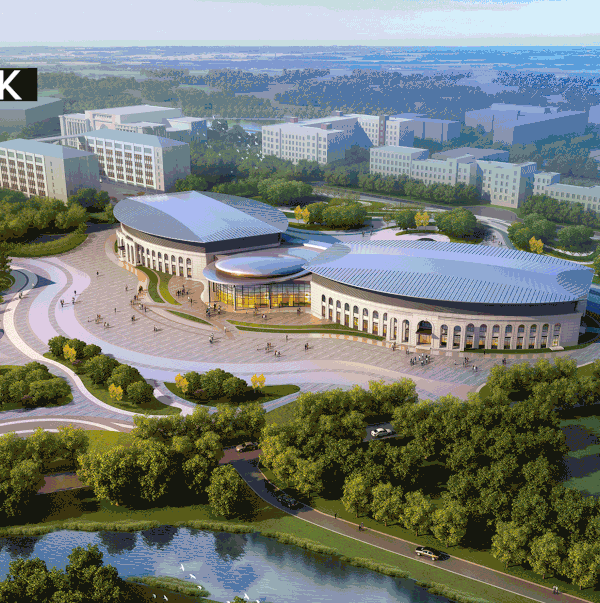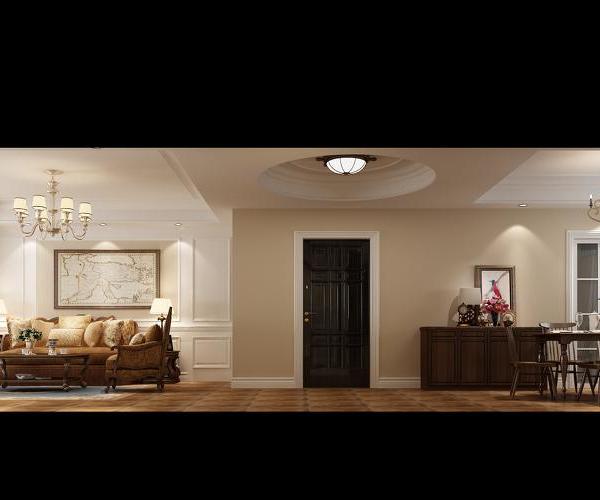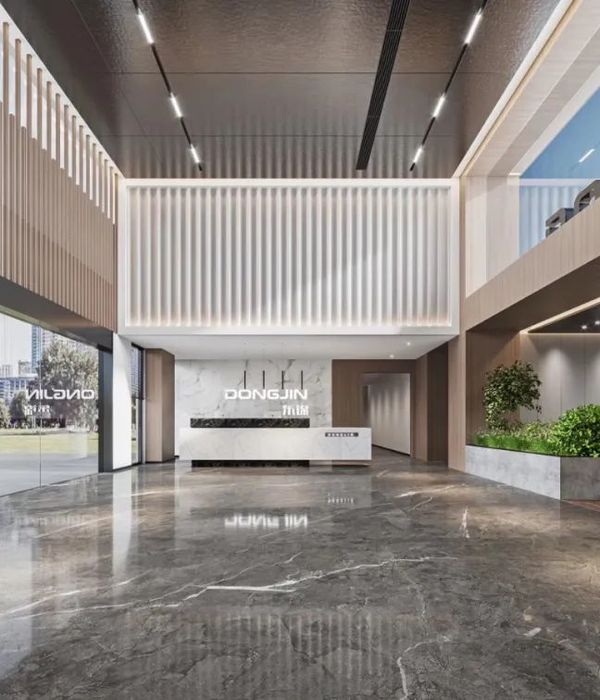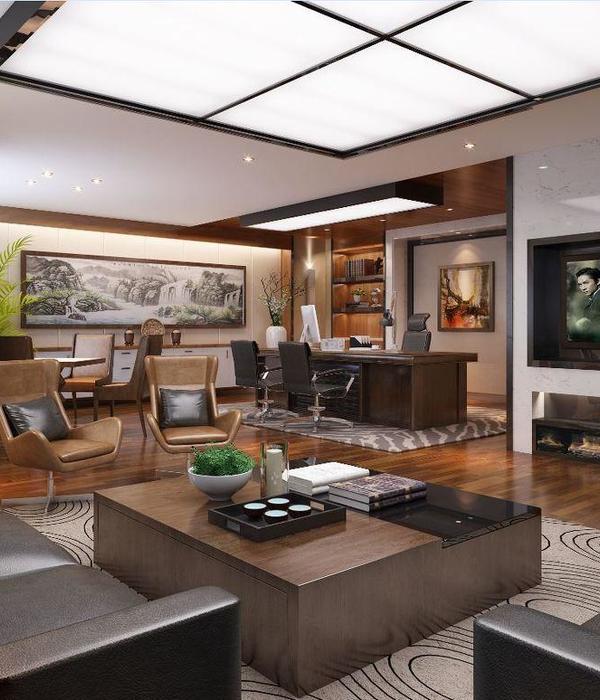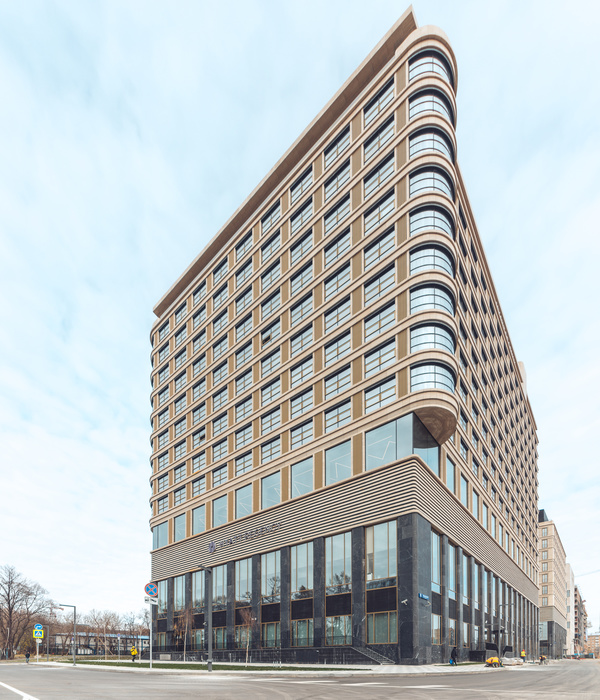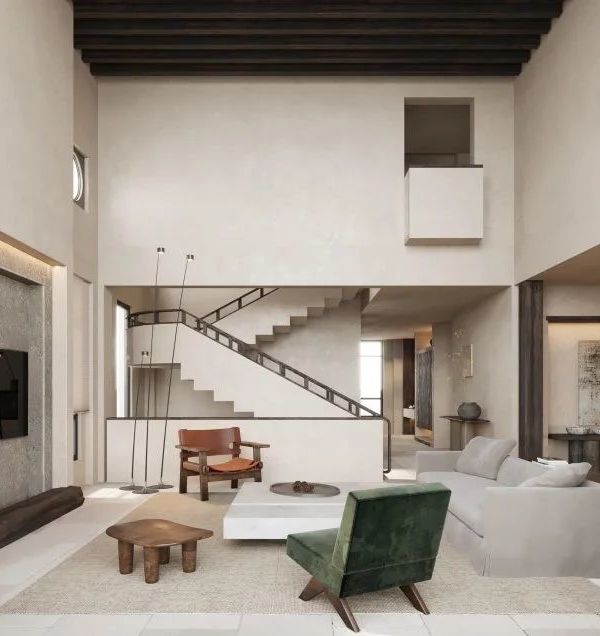- 项目名称:中石化一号加油站改造
- 建筑事务所:同济大学建筑设计研究院(集团)有限公司原作设计工作室
- 项目建筑师:王绪男,丁纯
- 建筑设计团队:张林琦,王祥,郭璐炜,刘皓(实习生)
- 项目完成年份:2020
- 建筑面积:222.64㎡
- 摄影师:章鱼见筑
中石化一号加油站位于苏州河边上滨河景观带之中,靠近黄浦江与苏州河的交界处。其原址为1948年建成的中国第一个国营的加油站。原有加油站的模式为经典的超市办公加上钢结构罩棚的模式,缺乏公共性和通透性;总体动线组织上,加油的机动车流线同公众流线之间缺乏适当的分流;功能上,绝佳的景观资源无法被单一的超市与加油功能所利用;文化资源在原有的模式化的加油站上也难以有与众不同的体现。因此我们在设计中的重点在于如何对于原有的加油站的模式有所突破,形成一个公共通透、动线合宜、功能复合、当代语境的基础设施加油站建筑。
No. 1 Sinopec Gas Station is located in the upper riverside along the Suzhou River, near its junction to Huangpu River. It was formerly China’s first state-owned gas station built in 1948. The original building is used as supermarket and office with a steel structure that works as a canopy. The structure itself lacks publicity and transparency. Besides, there is a lack of proper diversion between motor vehicles that want to refuel and the public. Furthermore, the excellent river landscape cannot be absorbed by the supermarket and the gas station. Cultural resources are wasted. Therefore, the focus of our design is how to make a breakthrough of gas station type and form an infrastructure that is publicly transparent, suitable for circulation, complex in function, and fit for contemporary context.
▼项目鸟瞰,aerial view of the project ©章鱼见筑
▼项目航拍顶视图,aerial top view of the project ©章鱼见筑
加油站的设计从滨河景观带的梳理开始,将原有的南侧混合动线拆解为南北两条动线,行人从靠近河边的北侧绕过加油站,加油车辆从南侧出入,拆分流线后,加油站的公共方向也由原来的南侧变为南北两侧,刚好同城市-滨河景观的通透方向一致,从而确定了南北贯通通透的建筑方向,最大程度的消解加油站建筑对于滨河景观的阻隔。
The design of the gas station starts from combing the riverside landscape, disassembling the mixed flow into two traffic lines: pedestrians bypassing the gas station from the north side near the river, and vehicles entering and exiting from the south side. Thus, the public side changes from the original south side to both the north and south sides, which fits public sphere of the city and riverside. It eliminates to the greatest extent the barrier the gas station causes to the riverside landscape.
▼加油站的设计从滨河景观带的梳理开始,The design of the gas station starts from combing the riverside landscape ©章鱼见筑
▼由河岸上方鸟瞰建筑,aerial view of the project from the river side ©章鱼见筑
▼由道路看项目,viewing the project from the street ©章鱼见筑
加油站分为一虚一实两个体量,虚的为加油棚架,实的为站房,不同于以往的两个异质的完全功能化的处理方式,在设计中,希望两个体量更加统一,共同形成建筑的形态塑造。每组折板一端折板顺延落地,另一端以一排细柱支撑,进一步凸显了折板的形态特征。折板在设计的初期被构想成为钢结构折板,然而考虑到钢结构直接落地产生的生锈风险,与地面接触的部分,折板的材料改为清水混凝土,因此折板变成了钢结构折板和混凝土折板结合的结构体,两组折板体量在不同的高度发生材料改变,在保证形态连续性的同时,钢折板通过铰接的方式锚定在混凝土折板之上,并将交接点空开,铰接点露出来,增强了结构的可读性。柱子和折板交接也顺应铰接点的方式,一方面让柱子受轴向力为主,减小柱子的直径,另一方面也使得折板的形态更加纯粹。钢结构折板显示出轻盈和简洁的状态,落地的混凝土折墙则在对比之下,更加呈现出精致有力的空间感受。
The gas station is divided into two volumes, one virtual and one real. The virtual one is the refueling scaffold and the real one is the station building. Different from the previous heterogeneous blocks, we hope that the two volumes are more united, forming the shape of the building together. The panels are inserted into the ground at one end and supported by a row of thin pillars at the other, which further highlights the morphological characteristics of the folded plates. The panels was conceived as steel structure in the early stage of the design. However, considering the risk of rust caused by the direct landing of the steel structure, the material is changed to fair-faced concrete, changing the panel into a combined structure of steel and concrete folded board. The volume of the two sets of folded boards changes at different heights. While ensuring the continuity of the form, the steel part is anchored on the concrete folded board by exposed hinges, which enhances the readability of the structure. The connection of the column and the folded panel also conforms to the way of the hinge point. On the one hand, the column is mainly subjected to axial force, which reduces the diameter of the column. On the other hand, the shape of the folded panel is more pure. The steel part shows a light and concise state, while the floor-to-ceiling concrete folded panel reveals an exquisite and powerful space experience.
▼加油站分为一虚一实两个体量,虚的为加油棚架,实的为站房,The gas station is divided into two volumes, one virtual and one real ©章鱼见筑
▼钢结构折板显示出轻盈和简洁的状态,The steel part shows a light and concise state ©章鱼见筑
由于加油的功能需求,加油站的棚架具有一定的跨度需求,考虑到折板形态具有增加跨度的作用,具有结构理性和视觉特征一体化的特点,因此建筑被构想成为一高一低的两组从地面翻折而起的折板,高的一组折板容纳了二层站房的功能,一楼为超市,二楼为咖啡厅,略矮的一组折板覆盖了加油的区域。
Due to the functional requirements of refueling, the scaffolding of the gas station has a certain span requirement. Considering that the folded plate form has the effect of increasing the span and has the characteristics of integration of structural rationality and visual characteristics, the building is conceived as a set of high and low folded panels that turns over from the ground. The high part of folded panels accommodates the functions of the two-story station building with a supermarket at the ground level and a café at the first level. The slightly lower part of the folded panels covers the refueling area.
▼咖啡厅与超市入口一侧,entrance of the cafe and the supermarket ©章鱼见筑
▼结构理性和视觉特征一体化,integration of structural rationality and visual characteristics ©章鱼见筑
▼咖啡厅露台,terrace of the cafe ©章鱼见筑
▼咖啡厅室内,interior of the cafe ©章鱼见筑
▼底层超市,supermarket on the ground floor ©章鱼见筑
▼由超市看室外,viewing the entrance from the inside of the supermarket ©章鱼见筑
加油站被命名为“苏河折”,结构和建筑形态一体化的方式使得,折板成为建筑最主要的特征,以结构理性为基础,复合了某种对于老建筑折墙的呼应,苏州河浪花的想象,以及折扇般的某种精致感。结构的纯粹性和意义的多义性赋予建筑当代的时代性,在这个富有历史记忆的场所,这种当代性,无疑是“文化加油站”最合理的注解。
The gas station is named “Suhe Zhe”. It means the integration of structure and building form, which makes the folded panels the most important feature of the building. Based on structural rationality, it combines a certain echo of the folded wall of the old building, the imagination of waves, and a kind of exquisiteness like a folding fan. The purity of the structure and the ambiguity of meaning endow the building with a contemporary era. In a place full of historical memory, this contemporaryity is undoubtedly the most reasonable annotation of “cultural gas station”.
▼楼梯细部,detail of the staircase ©章鱼见筑
▼分析图,diagram ©同济原作设计工作室
▼轴测图,axonometric drawing ©同济原作设计工作室
▼底层平面图,master ground floor plan ©同济原作设计工作室
▼二层平面图,upper floor plan ©同济原作设计工作室
▼立面图&剖面图,elevation and section ©同济原作设计工作室
▼剖面分析图,section analyse diagram ©同济原作设计工作室
{{item.text_origin}}

